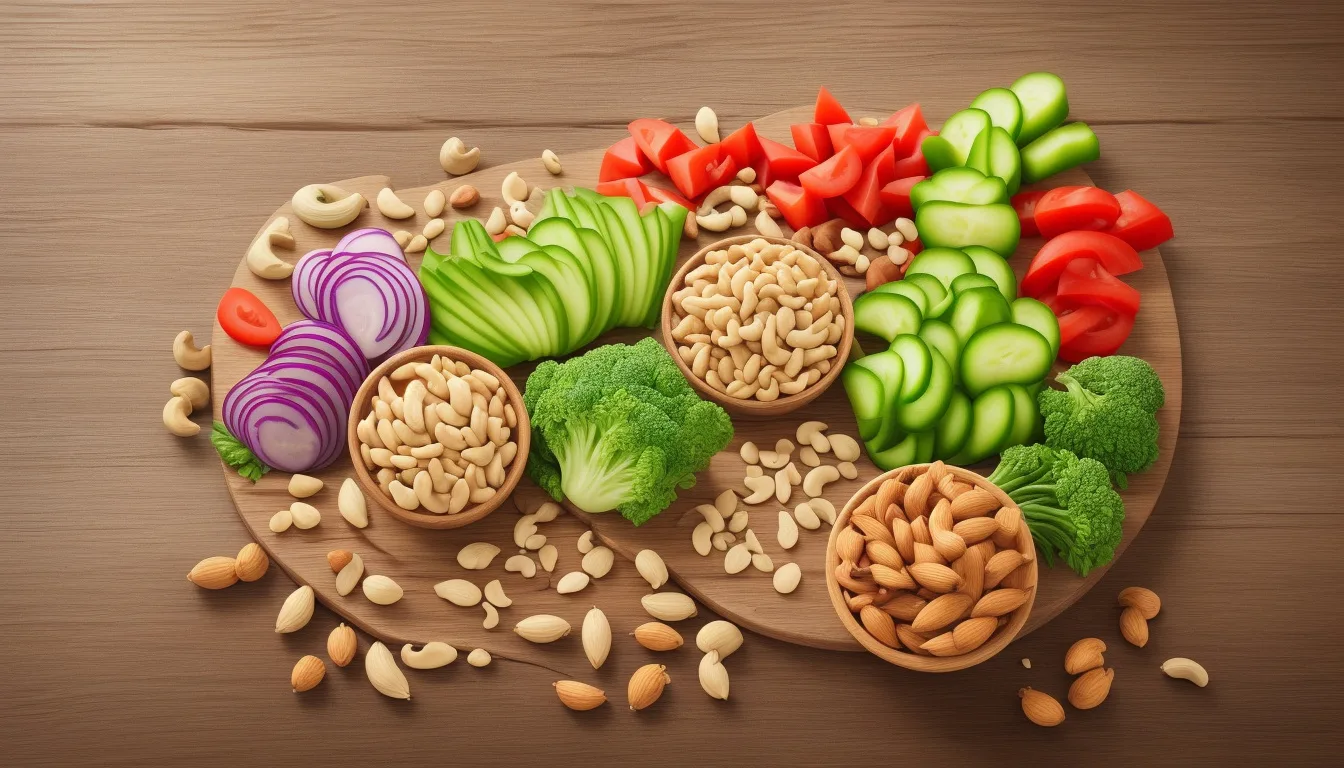
In recent years, the keto and low carb diet have surged in popularity as effective approaches to weight loss and improved health.
These dietary strategies emphasize reducing carbohydrate intake while increasing fat and protein consumption, resulting in various health benefits, from enhanced energy levels to improved mental clarity.
In this ultimate guide, we will explore what the keto and low carb diets entail, their key health benefits, how to get started, debunk common myths, and offer tips for maintaining long-term success.
Whether you’re looking to shed pounds, stabilize blood sugar, or simply improve your overall well-being, understanding the ins and outs of the keto and low carb diet can unlock a healthier you.
Download your FREE Macros Tracker Sheet here
 Keto and Low Carb Diet Benefits’ style=’display: block; margin: auto; max-width: 100%; height: auto;’>
Keto and Low Carb Diet Benefits’ style=’display: block; margin: auto; max-width: 100%; height: auto;’>
TL;DR
- Keto and low carb diets focus on reducing carbohydrate intake while increasing healthy fats.
- These diets are linked to numerous health benefits, including weight loss, improved blood sugar control, and heightened energy levels.
- Starting a keto or low carb diet involves strategic meal planning and understanding macronutrient ratios.
- Common myths, such as the idea that low carb diets are unhealthy long-term, can be debunked with scientific evidence.
- Maintaining a keto lifestyle requires dedication, meal prep, and finding community support to stay motivated.
Understanding the Keto and Low Carb Diets
The ‘keto and low carb diet‘ is increasingly gaining attention as a viable approach for weight management and improved health.
Both diets focus on reducing carbohydrate intake while promoting the consumption of fats and proteins, leading to a metabolic state known as ketosis in the case of keto.
The primary difference lies in their carbohydrate limits; the keto diet typically restricts carbs to about 5-10% of total daily calories, while low carb diets may permit a higher intake, around 20-30%.
This reduction in carbs triggers various physiological changes, including decreased insulin levels and increased fat oxidation, which can facilitate weight loss and enhance energy levels.
For those keen on adopting a keto and low carb diet, understanding these differences is crucial in tailoring the approach to personal health goals.
Key Health Benefits of Keto and Low Carb Nutrition
The keto and low carb diet have gained massive popularity in recent years, and for good reason.
One of the primary health benefits of these dietary approaches is weight loss.
By significantly reducing carbohydrate intake and replacing it with fats, the body enters a metabolic state called ketosis, where it becomes exceptionally efficient at burning fat for energy.
This can result in rapid weight loss and improved body composition.
Additionally, studies show that the keto and low carb diet can lead to better blood sugar control, making it particularly beneficial for those with type 2 diabetes or insulin resistance.
Another advantage is the potential for enhanced mental clarity and focus, attributed to the brain using ketones, derived from fats, as a reliable energy source.
Furthermore, many adherents report reduced hunger levels, leading to less snacking and easier adherence to the diet.
Overall, incorporating keto and low carb nutrition can yield significant health benefits while offering a satisfying and sustainable way to eat.
‘The doctor of the future will no longer treat the human frame with drugs, but rather will cure and prevent disease with nutrition.’ – Thomas A. Edison
How to Get Started on a Keto or Low Carb Diet
Embarking on a keto and low carb diet can be an exciting journey toward better health and weight management.
To get started, first, you should familiarize yourself with the fundamental principles of these diets, as they significantly differ from traditional eating habits.
A keto diet typically emphasizes a high intake of fats, moderate protein consumption, and very low carbohydrates, leading your body into a state of ketosis, where it burns fat for fuel instead of carbs.
Conversely, a low carb diet allows for a slightly higher carbohydrate intake while still reducing overall carbs from your meals.
To kick off your keto and low carb diet, begin by planning your meals around healthy fats like avocados, nuts, and oils while incorporating lean proteins and plenty of non-starchy vegetables.
It’s also advantageous to keep a food diary, which can help track your macronutrient intake and ensure you’re staying within your desired carb limit.
Additionally, staying hydrated and considering electrolyte balance is crucial, especially during the initial transition phase.
By gradually implementing these strategies, you’ll set yourself up for success as you transition into the world of keto and low carb eating.
Common Myths and Misconceptions about Low Carb Diets
When it comes to keto and low carb diets, numerous myths and misconceptions can cloud the judgment of those considering these dietary approaches.
One prevalent myth is that low carb diets are unhealthy and deficient in essential nutrients.
However, when planned correctly, a keto and low carb diet can provide ample nutrition by focusing on whole foods such as meats, fish, vegetables, nuts, and seeds.
Another common misconception is that these diets can lead to muscle loss.
In fact, many individuals on keto and low carb diets maintain or even gain muscle mass by incorporating adequate protein and resistance training into their routines.
Additionally, some believe that low carb diets are only effective for quick weight loss and not for long-term health benefits, yet studies have shown that a sustained low carb intake can support metabolic health and improved blood sugar levels.
Understanding the facts behind these myths is crucial for anyone looking to explore the potential benefits of a keto and low carb diet.




